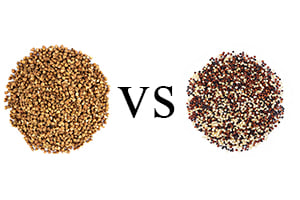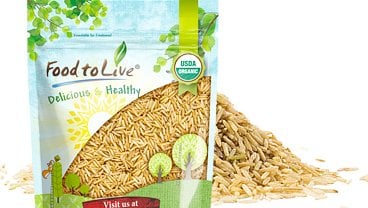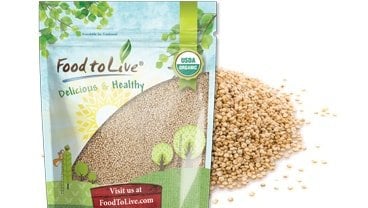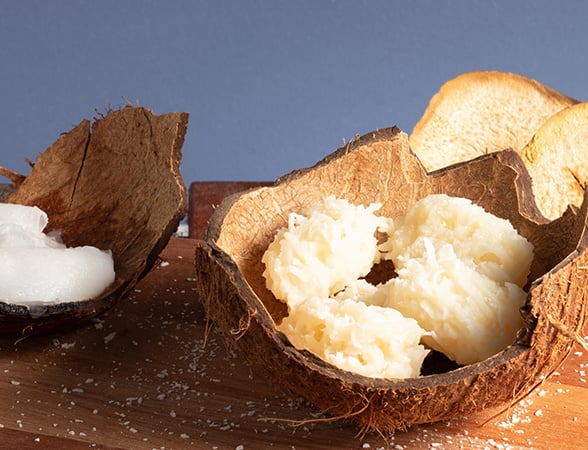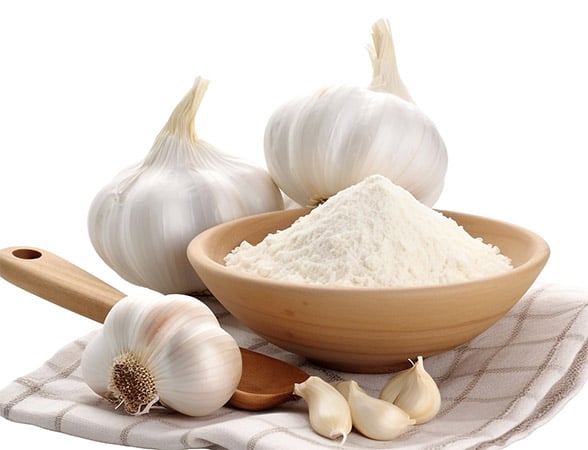September 30, 2023 · Written by Foodtolive Team
Why Buckwheat Is a Kitchen Essential
Buckwheat is a unique and versatile food that’s becoming popular in kitchens around the world. It might seem a bit unfamiliar, but don’t worry; we’re here to help you understand what it is, where it comes from, why it’s good for you, and how to cook it just right. We’ll also clear up the confusion between buckwheat groats and kasha. Let’s get started!
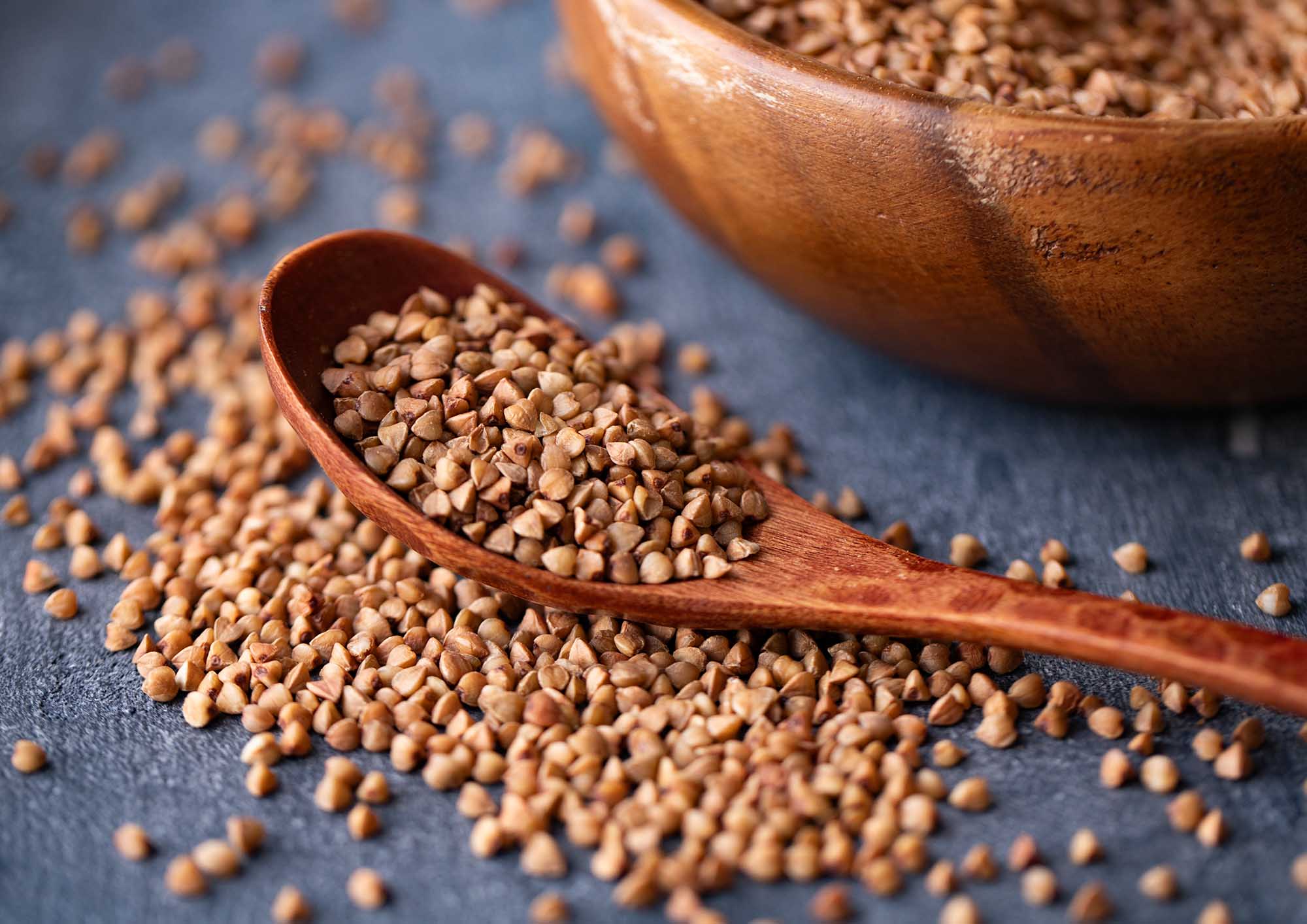 What is Buckwheat?
What is Buckwheat?
Before we start cooking, let’s clarify something: Buckwheat is not wheat at all. It’s actually a gluten-free seed that’s often mistaken for a grain. Buckwheat comes from a plant called Fagopyrum esculentum and has a long history originating in Asia, specifically China and the Himalayas.
Types of Buckwheat
There are two primary varieties of buckwheat:
- Common Buckwheat (Fagopyrum esculentum): This is the one you’ll most commonly come across. It’s renowned for its groats or kernels.
- Tartary Buckwheat (Fagopyrum tataricum): This variety is less prevalent but offers a unique twist. Often referred to as the “black” variety, it has a more robust flavor and is primarily used for its groats or flour.
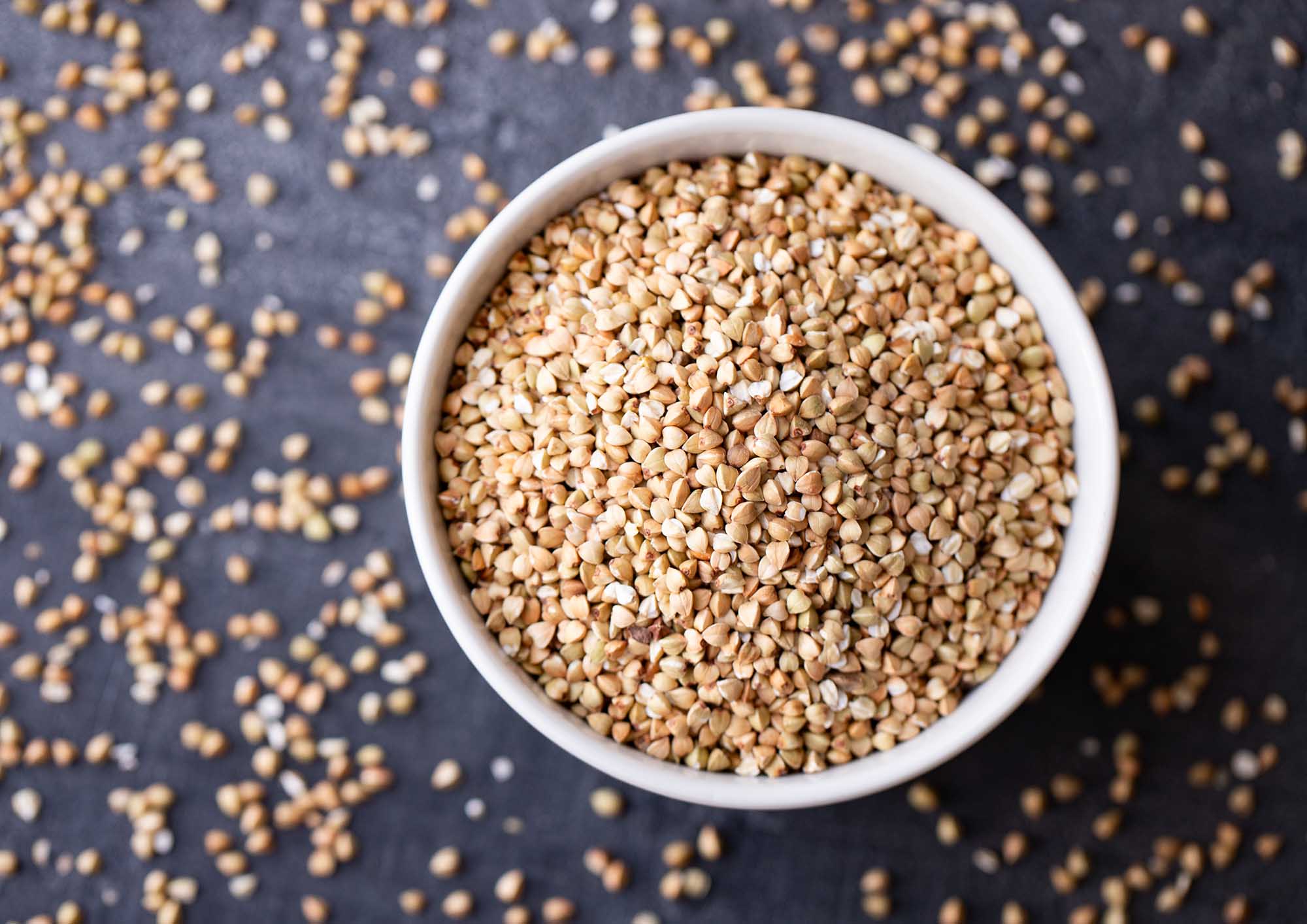 Health Benefits of Buckwheat
Health Benefits of Buckwheat
Buckwheat packs a powerful punch when it comes to health benefits:
- Gluten-Free Goodness: Perfect for folks with gluten sensitivities or those following a celiac-friendly diet.
- Nutrient-Rich: Loaded with fiber, protein, vitamins, and essential minerals like magnesium, manganese, and iron.
- Heart Health: It’s a heart-friendly choice, known to reduce cholesterol levels and lower the risk of heart disease.
- Blood Sugar Control: Thanks to its complex carbohydrates, buckwheat helps keep blood sugar levels in check.
- Antioxidant Boost: Buckwheat boasts rutin, a potent antioxidant that contributes to overall well-being.
Buckwheat Groats vs. Kasha
- Buckwheat Groats: These are raw, unprocessed buckwheat seeds. They’re versatile and can be cooked into a variety of dishes, from hearty breakfast porridge to salads and sides.
- Buckwheat Kasha: Kasha is groats that have been roasted. The roasting process gives kasha a distinct nutty flavor and a slightly earthy aroma. It’s commonly used in various dishes, adding a rich and savory element to recipes. Just like buckwheat groats, kasha is versatile and can be incorporated into a wide range of meals, from savory side dishes to comforting porridge. Its unique roasted flavor can elevate the taste of your favorite recipes.
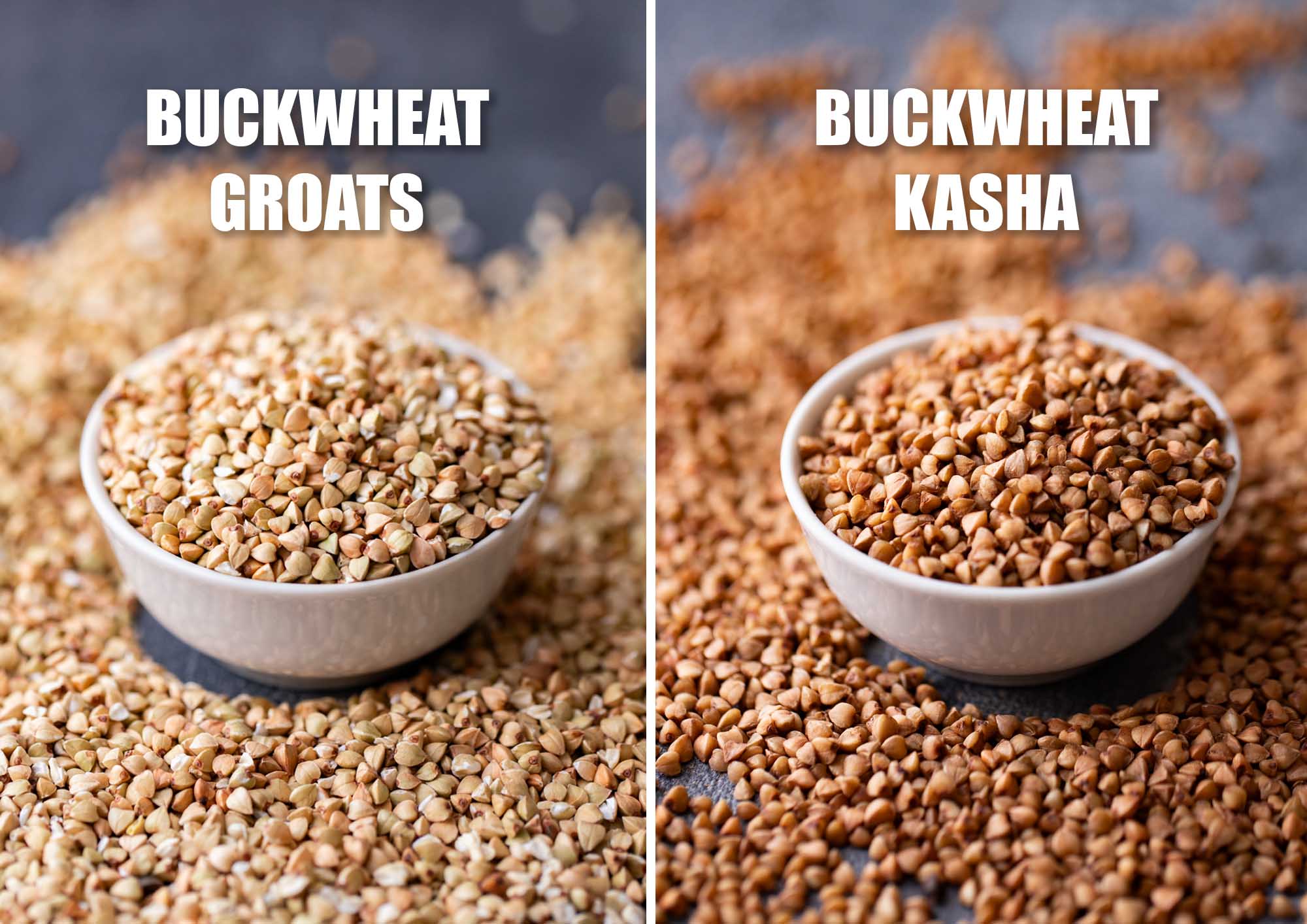 Ways to Use Buckwheat
Ways to Use Buckwheat
Buckwheat boasts a unique and distinctive taste, aroma, and texture. Its flavor is earthy and nutty, with a subtle bitterness that adds depth to dishes. The aroma is hearty and warm, reminiscent of roasted nuts or toasted grains.
In terms of texture, cooked buckwheat is delightfully tender yet maintains a pleasant “al dente” quality. It has a slight chewiness that complements its overall nutty profile. This combination of taste, aroma, and texture makes buckwheat a versatile and flavorful ingredient, perfect for both savory and sweet recipes.
Here are some creative ways to incorporate buckwheat into your cooking:
- Buckwheat Porridge: Start your day with a warm and comforting buckwheat porridge. Top it with your choice of fresh berries, honey, nuts, or a sprinkle of cinnamon for extra flavor.
- Salads: Add cooked and cooled buckwheat to your salads. It lends a pleasant nuttiness and heartiness to green and grain salads alike.
- Buckwheat Flour: Buckwheat flour is a fantastic gluten-free alternative in baking. Use it to make pancakes, muffins, or even gluten-free bread for those with dietary restrictions.
- Sides and Pilafs: Serve buckwheat as a side dish alongside roasted vegetables or meats. You can also create flavorful pilafs by combining cooked buckwheat with sautéed onions, garlic, and your favorite spices. Try our Mushroom Buckwheat Pilaf recipe.
- Soba Noodles: In Japanese cuisine, buckwheat is used to make soba noodles. These thin, brown noodles are not only delicious but also offer a unique texture and a slightly nutty flavor.
- Stir-Fries: Use cooked buckwheat as a base for stir-fried vegetables and proteins. Its neutral flavor pairs well with various stir-fry sauces.
- Soups and Stews: Add cooked buckwheat to your favorite soups and stews for an extra dose of heartiness and nutrition.
- Buckwheat Risotto: Try making a creamy and satisfying buckwheat risotto by slowly cooking buckwheat groats in vegetable or chicken broth until they absorb the flavors.
- Buckwheat Cookies: Incorporate buckwheat groats or buckwheat flour into your homemade cookie recipes or granola mix for added crunch and nutrition.
- Buckwheat Pancakes: Whip up fluffy buckwheat pancakes for a hearty breakfast option. Top them with yogurt, fresh fruit, or pure maple syrup.
- Buckwheat Granola: Incorporate buckwheat groats into your granola mix for added crunch and nutrition.
- Buckinis (Activated Buckwheat): Elevate your breakfast or snack game by adding buckinis to your repertoire. Buckinis are made from activated buckwheat groats that have been soaked and dehydrated. Try Our Chocolate Caramelized Buckinis recipe. Sprinkle them on yogurt, enjoy them with milk, or munch on them straight from the jar for a delicious and satisfying treat.
- Buckwheat Sprouts: Explore the world of buckwheat sprouts by soaking and sprouting buckwheat groats. These fresh and crunchy sprouts make a delightful addition to salads, sandwiches, and wraps. They add a refreshing, nutty flavor and a nutritious boost to your meals.
 Basic Cooking Instructions for Buckwheat
Basic Cooking Instructions for Buckwheat
- Rinse: Start by giving your buckwheat groats a good rinse under cold water. This helps eliminate excess starch and any lingering bitterness, especially for kasha.
- Boil: In a saucepan, combine 1 cup of buckwheat groats with 2 cups of water, and add a pinch of salt. Bring to a boil. Then, reduce the heat, cover, and let it simmer for 10-15 min (or 20-25 min if you’re going with kasha).
- Fluff: Once the water has been absorbed, use a fork to fluff up your buckwheat, making it fluffy and ready to enjoy.
Food to Live Secret Technique: Elevating Your Buckwheat Experience
Before we wrap up, we have something special for you — a game-changing recipe that will transform your buckwheat into fluffy perfection with a delightful nutty aroma. You can customize it with your favorite toppings or enjoy it as is. This method works for both — buckwheat groats and buckwheat kasha.
Ingredients:
- 1 cup of buckwheat groats or buckwheat kasha
- 2 cups water
- ½ tsp salt
Instructions:
- Start by rinsing the buckwheat under running water and shake off any excess moisture.
- Transfer the rinsed buckwheat to a dry, hot skillet and toast it over high heat for about 2-3 min, stirring constantly to prevent burning.
- Once toasted, add half a cup of water and continue stirring until all the water evaporates. Keep cooking over medium-high heat.
- After the first half cup of water has been absorbed, add another half cup and repeat the process.
- Finally, add one more cup of water and half a teaspoon of salt. Cover the skillet with a lid and let the buckwheat simmer over medium heat for about 10 min or until all the water is absorbed.
- Your fluffy and aromatic buckwheat is ready! At this stage, you can enhance the dish by adding caramelized onions or other vegetables of your choice. Enjoy on its own or as a side.
 Buckwheat is a fascinating ingredient that deserves a spot in your pantry. Whether you’re gluten-sensitive, health-conscious, or simply on the lookout for new flavors, buckwheat has got you covered. Give it a whirl in your cooking, and you’ll discover its unique taste and exceptional health benefits. It’s a win-win for your taste buds and your well-being!
Buckwheat is a fascinating ingredient that deserves a spot in your pantry. Whether you’re gluten-sensitive, health-conscious, or simply on the lookout for new flavors, buckwheat has got you covered. Give it a whirl in your cooking, and you’ll discover its unique taste and exceptional health benefits. It’s a win-win for your taste buds and your well-being!

